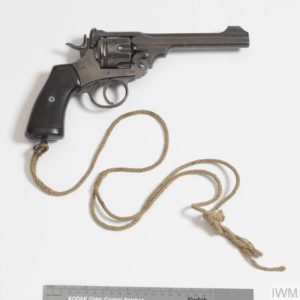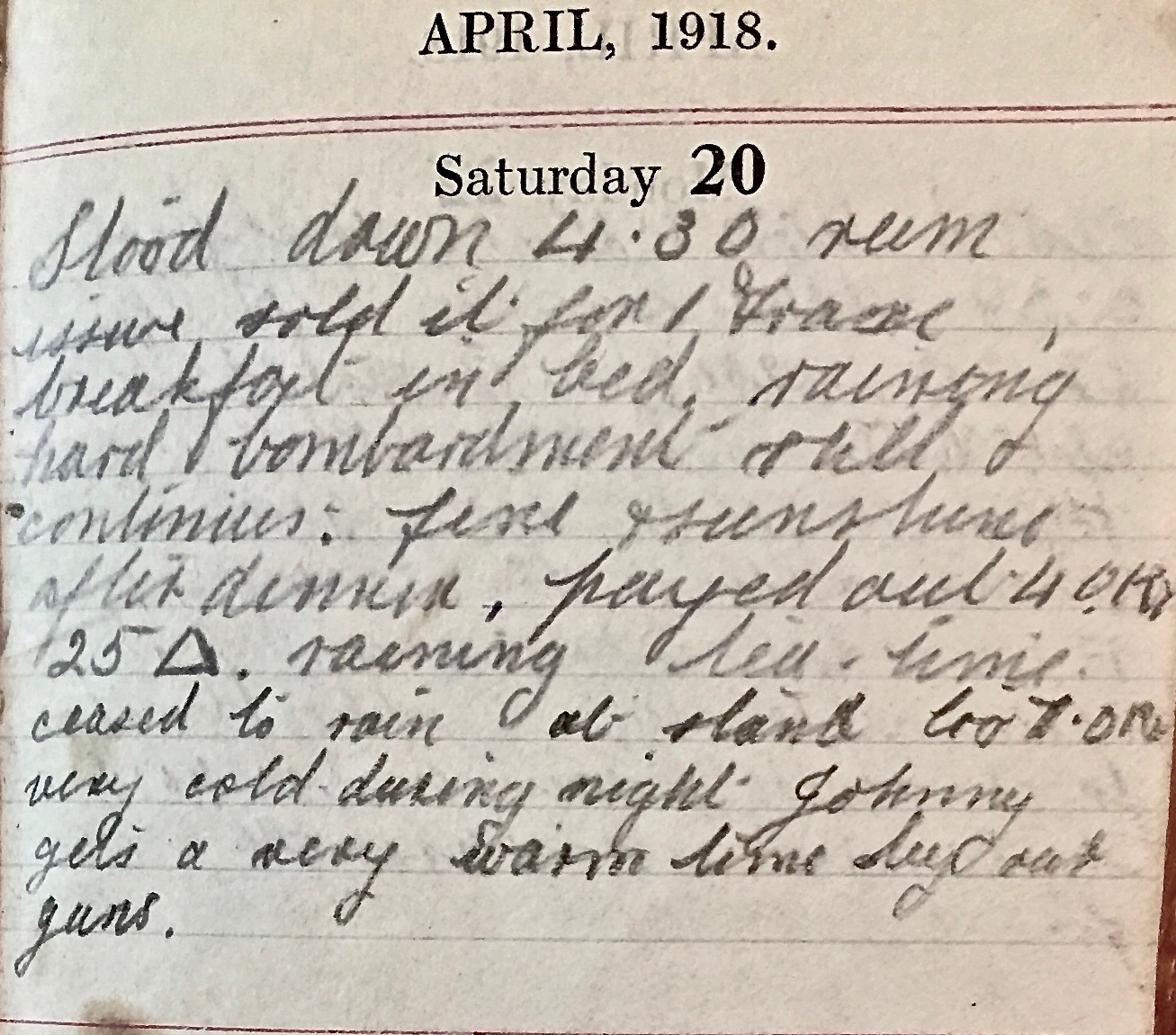Saturday April 20th, 1918
Stood down 4:30. Rum issue sold it for 1 Franc. Breakfast in bed, raining hard. Bombardment still continues. Fine and sunshine after dinner. Payed out 40 ?? 25 ??. Raining tea time. Ceased to rain at stand to 7pm. Very cold during night. Johnny gets a very warm time by our guns.
Artillery
Both Frank and the Battalion continue to report the bombardment, now in its third day. The following short clip, from a longer film of the ‘Royal Horse Artillery in Training (1910-1919)’ from British Pathé, shows the Field Artillery on the move.¹
Frank and his machine gun crew also seem to be active tonight, giving Johnny a ‘warm time’. We haven’t been able to decipher the symbols in Frank’s diary. The triangle seems to be the Greek letter for Delta, which used to be used for drachma. Any ideas?
Revolvers & Swagger Sticks

The Battalion Diary today states that any officers involved in active operations should be ‘dressed and equipped like the men’. The instruction was probably issued to make it more difficult for the enemy to identify and target officers. However the note then goes on to say that revolvers and field glasses may be carried though not sticks. Revolvers were a strong indicator of the presence of an officer. While the rank and file carried the SMLE, only officers routinely carried revolvers .
The standard-issue revolver from 1915 was the Webley Mark VI. It was used across all three services. In the Army it was issued to officers, trench raiders, machine gun teams and tank crews. As officers had to pay for their revolvers, some of them opted for other makes and models.² It was replaced by the Enfield No 2 revolver in 1932.*
‘Swagger sticks’ were optional equipment for commissioned officers. Similar ‘pace sticks’ were also used by some warrant officers and senior NCO. Sticks were introduced under the reign of Charles I and were used to mete out summary punishments for minor offences by lashing the miscreant with them. Apparently, their use in this manner by NCO is the origin of the phrase ‘corporal punishment’.³
13th (Service) Battalion War Diary – 20th April 1918 – Crow Hill
Our artillery was fairly active during the day. Enemy artillery was very quiet. 2 men were seen working near two piles of broken stone near trenches on Devedzelli Spur at 05:30 hrs. Work appears to have been done on the trenches on Flatiron Hill during there night. In the evening enemy artillery fired a few rounds on our communications, Bowls Barrow and Tomato. From 18:15 to 18:30 hrs an enemy plane approached our lines flying low, but did not cross them. It was not fired on by our AA guns.
A patrol noticed a large number of footmarks on swampy ground about 500 yds north west of Dautli Track Post. A fair amount of movement was observed on various tracks between Devedzelli Hill and Dolina. In the evening sounds of a band playing, men singing and motor traffic were heard in the direction of White Scar Hill, presumably behind the Trapeze de Pobreg. Visibility was very low all day. Church services were held at the Transport lines and at HQ Crow Hill.
The Brigade Athletic Sports Meeting has been provisionally fixed for the 8th May. Officers taking part in active operations which may bring them into close contact with the enemy are to be dressed and equipped exactly like the men, except that revolvers and field glasses will be carried. Sticks will not be carried. Work and cablegrams to the UK can now be accepted again. Heavy bombardment on both sides during the night.
References & Further Reading
¹ Complete Footage of ‘Royal Horse Artillery in Training (1910-1919)’, copyright British Pathé
² British Army Uniform & Equipment in WWI on Wikipedia
³ ‘Officers‘ on Tommy 1418
* FIR 11492 copyright Imperial War Museums


